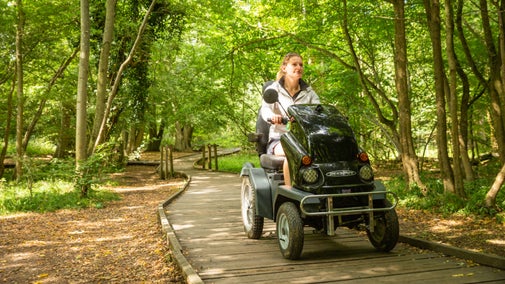
Discover more at Bathampton Meadows
Find out when Bathampton Meadows is open, how to get here, the things to see and do and more.

Located on the eastern edge of Bath, Bathampton Meadows contributes to the green surroundings of the World Heritage City of Bath. As a green corridor it links the centre of Bath to the surrounding areas of Batheaston, Bathampton and Bathford. A stroll through the meadows, which date back to the late 18th century and were once part of Ralph Allen’s estate, takes in farmland, waterways and views of the city. Here’s a guide to some of the things you can see on Bathampton Meadows.
With many trees now bare for the winter months, the evergreens such as holly give a welcome burst of colour wit their rich red berries. Without the leaves, winter is a wonderful time for bird spotting and there are plenty to see at Bathampton Meadows. And should we see snowfall this year, you’ll be able to spot mammal footprints from animals such as otters who continue to fish in the river all year round.
From birds of prey to migratory geese, there’s a surge of birds to see during the winter months. Often you can hear the buzzards before spotting them in clear blue skies and occasionally you might spot a kestrel hovering for its next meal. Last year we saw the first red kites scavenging behind a tractor. Geese numbers swell in the winter with visiting Canadian geese and Greylag geese from Iceland.
Small birds like robins and goldcrest are easier to spot without the foliage on the hedgerows and if you’re lucky you might even see redwings and fieldfare.
Wetter weather saturates the meadows at this time of year, and should we have heavy rainfall the river will burst its banks and flood the fields protecting the surrounding built up areas. If this is followed by cold nights, ice forms and helps to show the undulations in the meadows giving us a hint of the history of the old field boundaries, hedgerows and field drains.
The Meadows are made up of three large open fields which connect surrounding areas to the centre of Bath. This historic farmland dates back to 1743 when Ralph Allen purchased Bathampton Manor and the estate that is now Bathampton Meadows. As a designated flood area for the river Avon which runs alongside, you can see wetland areas which offer different fauna and flora throughout the seasons.
Bathampton Meadows is home to some ancient trees including an oak tree that’s estimated to be over 800 years old making it a contender for ‘Champion Oak status’. You can spot the tree from the path as you pass the sheep grazing fields, a smaller oak stands next to it. Home to many other trees lining the river and edges of the Meadows, you can also see giant sequoia trees and willows by the river. Over 2000 new hedgerow trees have been planted on the Meadows, which will add to blossom on the Meadows over time.

Blackthorn and willow trees offer a welcome burst of colour in springtime as they start to flower. You can also see blossom on the pear trees by the bridge in Batheaston. From spring the Meadows start to come alive with marsh-marigolds and cuckoo flowers, and in the summer months the fields are dappled with wildflowers such as purple loosestrife and other wetland loving plants. In the coming years the diversity of wildflowers will improve as new seed is sown across the Meadows.
Home to many bats, birds and butterflies, the meadows provide an opportunity to spend time in nature. Hedgerows provide navigation routes for bats and have recently been planted with new trees and grassland seed mix to provide homes for pollinators and breeding sites for birds. We’ll be conducting butterfly surveys in the summer months to monitor the number of species already present in the meadows and to see how this changes over time.
Running alongside the river Avon, the Meadows see many visiting birds that come because of the river such as migrating Canadian geese. On a walk you might spot swans, ducks and other water loving birds. If you're lucky enough, you might even spot a beaver. In the field near, Kensington Meadows, an old Victorian culvert and stream run through the middle.
Due to the open nature of Bathampton Meadows, on clear days there are some wonderful views of landmarks in Bath. Look up to Little Solsbury Hill, which is easily reached from the Meadows for those looking for longer walks, or across to Bathampton Downs or the tree-rich Browne’s Folly.

Find out when Bathampton Meadows is open, how to get here, the things to see and do and more.
Wide open space overlooking the World Heritage City of Bath

Walk amongst ancient woodlands in our care. You can find centuries-old oak, sweet chestnut, yew and cherry trees on our trails around the UK.

A 6-mile circular walk, just a short stroll from Bath city centre. Enter another world in the skyline hills above Bath, through meadows and ancient woodlands to secluded valleys.
